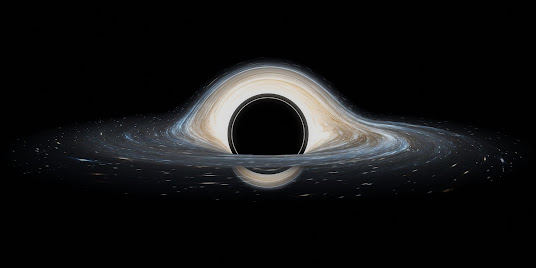Spiral Galaxies
Spiral galaxies, with their majestic arms and luminous cores, are some of the most captivating and beautiful structures in the universe. These cosmic wonders, which include our own Milky Way, are characterized by their flat, rotating disk of stars, gas, and dust, along with a central bulge of older stars and a halo containing globular clusters
Spiral Galaxies
Spiral galaxies are distinguished by their distinct components:
1. The Disk: The most recognizable feature of a spiral galaxy is its disk, which contains spiral arms extending from the center. These arms are sites of active star formation and are composed of young, hot stars that give them a bright, bluish appearance.
2. The Bulge: At the heart of a spiral galaxy lies the central bulge, a densely packed region of older stars. The bulge can vary in size and shape, from nearly spherical to more elongated structures.
3. The Halo: Surrounding the disk and bulge is the halo, a spherical region containing older stars, globular clusters, and dark matter. The halo extends far beyond the visible components of the galaxy.
4. Spiral Arms: These arms are not fixed structures but are instead density waves that move through the disk. As gas and dust pass through these waves, they compress, leading to the formation of new stars. This process gives the arms their bright and prominent appearance.
Types of Spiral Galaxies
Spiral galaxies are classified into two main categories based on the tightness of their spiral arms and the size of their central bulge:
1. Normal Spirals (S): These galaxies have well-defined spiral arms that wind outwards from the center. They are further divided into three subcategories:
- Sa: Featuring tightly wound arms and a large central bulge.
- Sb: Exhibiting moderately wound arms and a medium-sized bulge.
- Sc: Displaying loosely wound arms and a small central bulge.
2. Barred Spirals (SB): These galaxies possess a central bar-shaped structure composed of stars, from which the spiral arms extend. They are similarly divided into three subcategories:
- SBa: Characterized by tightly wound arms and a prominent bar.
- SBb: Having moderately wound arms and a noticeable bar.
- SBc: Displaying loosely wound arms and a less pronounced bar.
Formation and Evolution
The formation and evolution of spiral galaxies are complex processes influenced by various factors, including initial conditions, environment, and interactions with other galaxies.
Formation
Spiral galaxies are thought to form through the gravitational collapse of gas clouds in the early universe. These gas clouds began to rotate and flatten into a disk due to conservation of angular momentum. Over time, the gas in the disk cooled and condensed, leading to the formation of stars and the development of spiral arms.
Evolution
The evolution of spiral galaxies is driven by several processes:
1. Star Formation: Spiral galaxies are active sites of star formation, particularly in their spiral arms. The ongoing formation of new stars shapes the appearance and structure of the galaxy.
2. Galactic Interactions: Interactions with other galaxies, such as mergers and close encounters, can significantly impact the evolution of a spiral galaxy. These interactions can trigger bursts of star formation, alter the structure of the spiral arms, and even transform a spiral galaxy into a different type of galaxy.
3. Secular Evolution: Internal processes, such as the movement of stars and gas within the galaxy, also play a role in its evolution. Over time, these processes can lead to changes in the size and shape of the central bulge and the distribution of stars within the disk.
The Milky Way: Our Spiral Galaxy
Our own Milky Way is a barred spiral galaxy, specifically classified as an SBbc galaxy. It contains a central bar, moderately wound spiral arms, and a mix of old and new stars. The Milky Way's disk is about 100,000 light-years in diameter and contains billions of stars, along with vast amounts of gas and dust.
The Milky Way's spiral structure includes several major arms, such as the Perseus Arm, the Sagittarius Arm, and the Orion Arm, where our Solar System is located. These arms are sites of active star formation, hosting numerous star clusters, nebulae, and other celestial objects.
The Importance of Studying Spiral Galaxies
Studying spiral galaxies is crucial for several reasons:
1. Understanding Star Formation: Spiral galaxies are key laboratories for studying star formation. The process of star formation in spiral arms helps astronomers understand the conditions and mechanisms that lead to the birth of new stars.
2. Probing Galactic Dynamics: The rotation and structure of spiral galaxies provide insights into the dynamics of galaxies. By studying the movement of stars and gas within spiral galaxies, astronomers can learn about the distribution of mass, including the presence of dark matter.
3. Tracing Galactic Evolution: Observing spiral galaxies at different stages of their evolution helps astronomers piece together the history of galaxies. By comparing young and old spiral galaxies, scientists can infer the processes that shape the life cycle of galaxies.
4. Connecting to Cosmology: Spiral galaxies are an integral part of the large-scale structure of the universe. Studying their distribution, interactions, and evolution contributes to our understanding of the formation and growth of cosmic structures.
Spiral galaxies, with their elegant structures and dynamic processes, are among the most fascinating objects in the universe. From their formation and evolution to their role in star formation and galactic dynamics, these galaxies offer a wealth of information about the cosmos. As our observational capabilities continue to improve, future discoveries about spiral galaxies will undoubtedly deepen our understanding of the universe and our place within it.


.jpeg)



Comments
Post a Comment